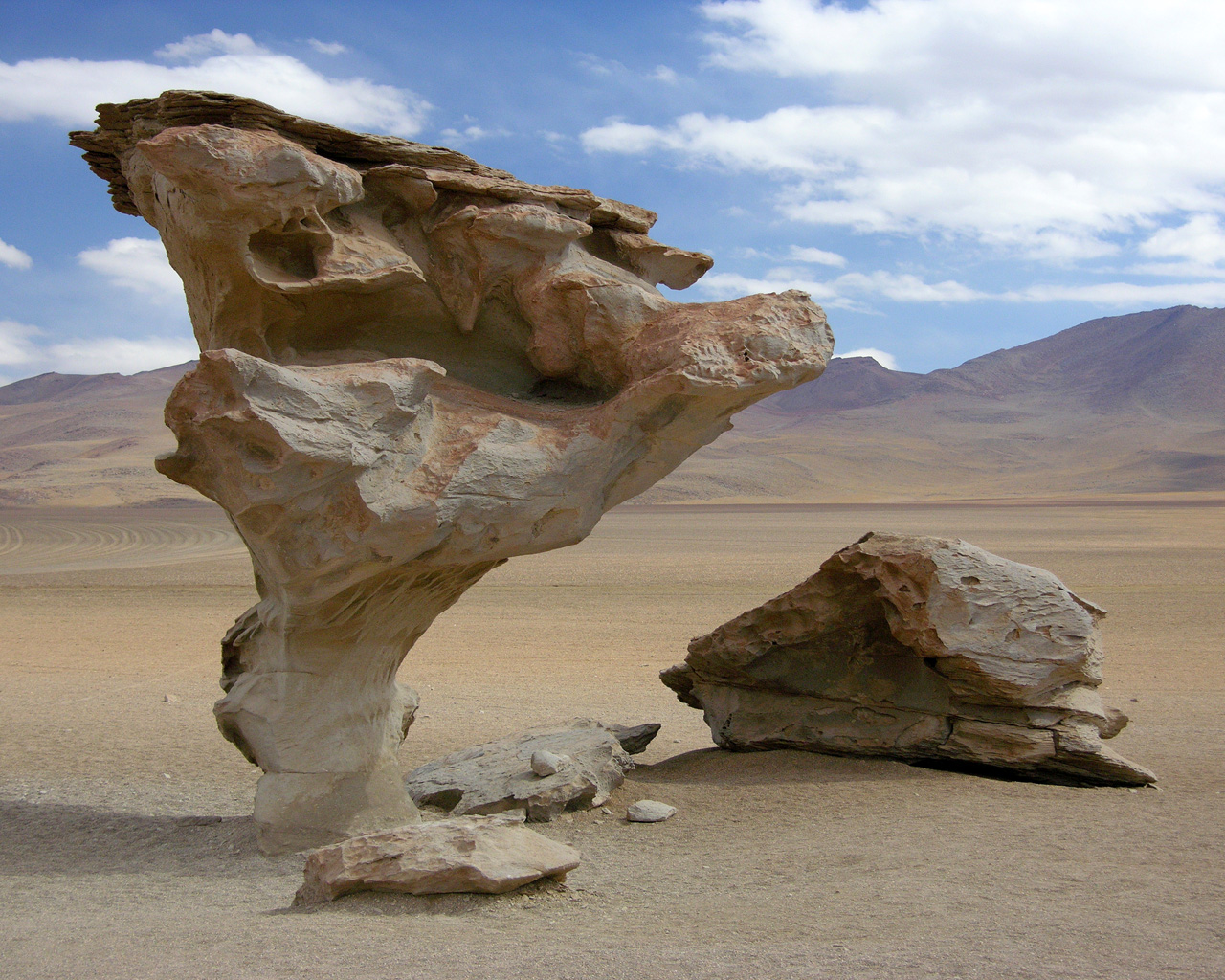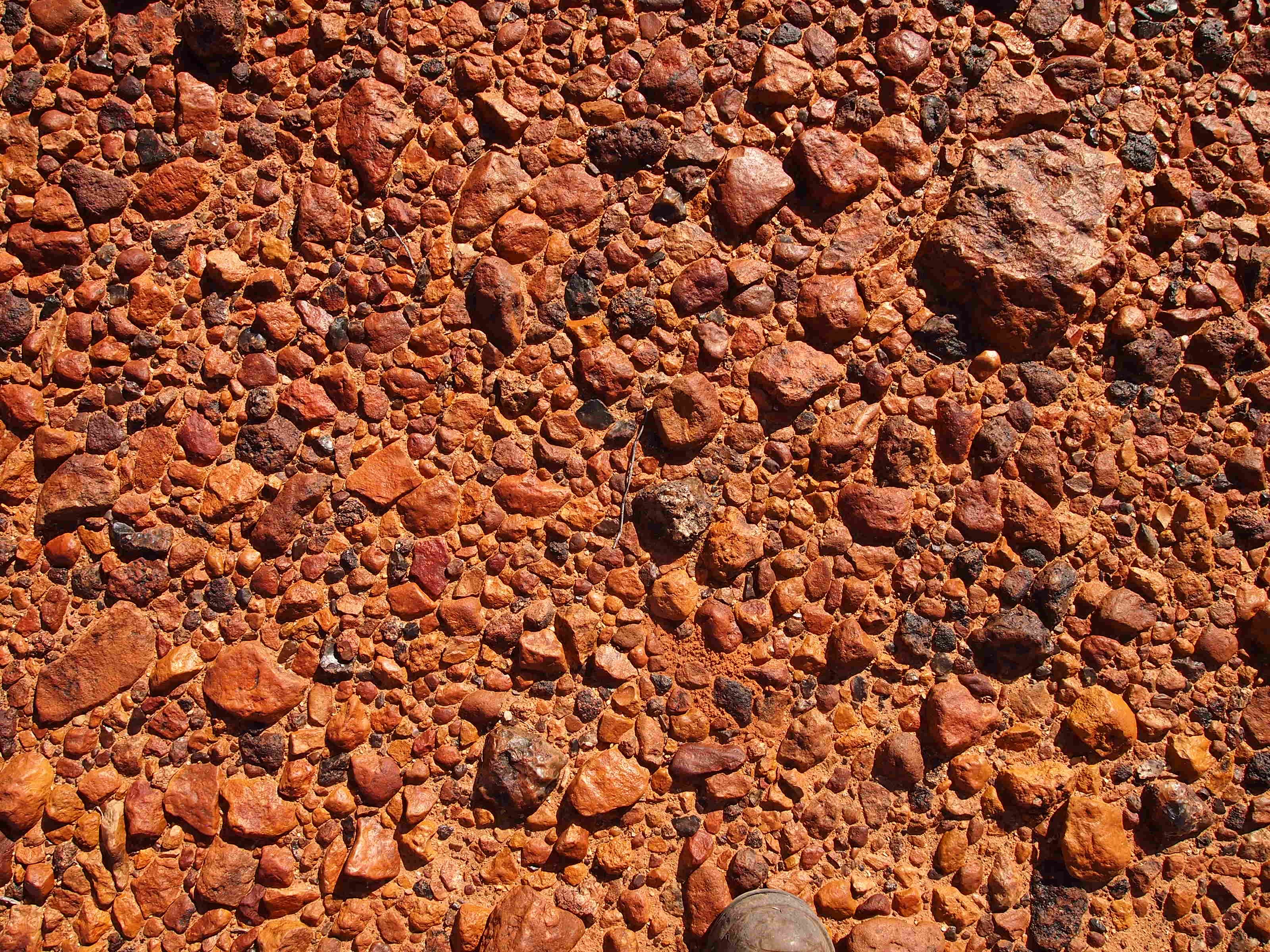The picture above is what most people think of when they think of deserts. However, wind blown sand only makes up 2% of North American deserts, 10% of the Sahara, and 30% of the Arabian desert.
There are many processes that create geological structures. What follows is a quick selection of them, particularly ones that are in play in the desert.
| glaciofluvial deposits along Matanuska River, Alaska |
 |
| rock sculpted by wind in Altiplano region of Bolivia |
Desert pavement is a desert surface composed of interlocking rocks. It looks like the land was run over by a steamroller. There are multiple theories about how the pavement forms, but I find the most recent theory fascinating. In the given example, we start out with a lava flow then, over time, dust is deposited, but due to "heave" (which I think means shaking about by wind), all loose rocks move upward as new dust is added. The result is that helium-3 dating of the rocks shows that the dust under the rocks is actually much newer than the rocks on the top. Furthermore, there are no rocks in the dust underneath because they have all migrated to the surface.
Desert pavement is often coated in desert varnish, but desert varnish can occur on anything that sits on exposed rock surfaces for long periods of time. It only occurs in an area where there is no frequent precipitation, fracturing, or wind abrasion. However, the varnish requires wind to deposit clay on the surfaces to be varnished, so presumably that means the wind must be relatively mild.
The varnish contains a large amount of wind deposited clay which acts as a substrate to catch additional substances that chemically react together in high temperatures. Wetting by dew is also involved.
The resulting varnish contains a high concentration of manganese which is significant because it only makes up 0.12% of Earth's crust by weight, but it's 50 to 60 times more abundant in varnish. One theory for why this is involves manganese-oxidizing microbes.


No comments:
Post a Comment